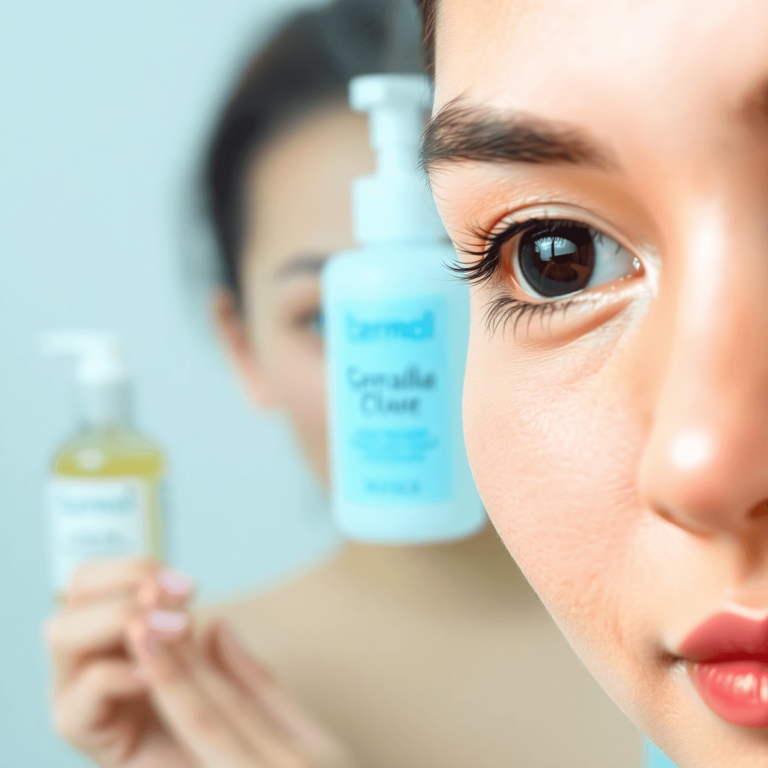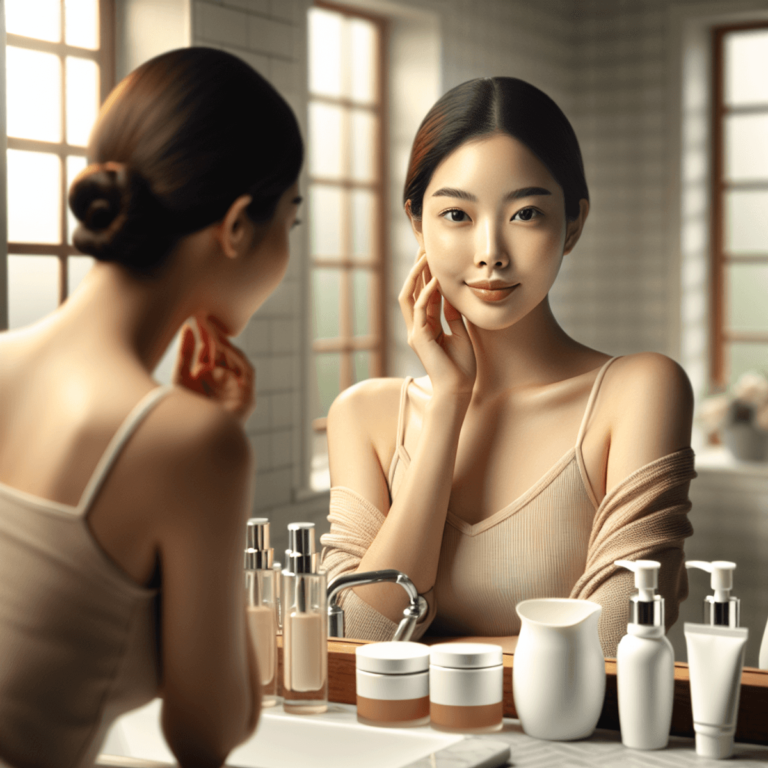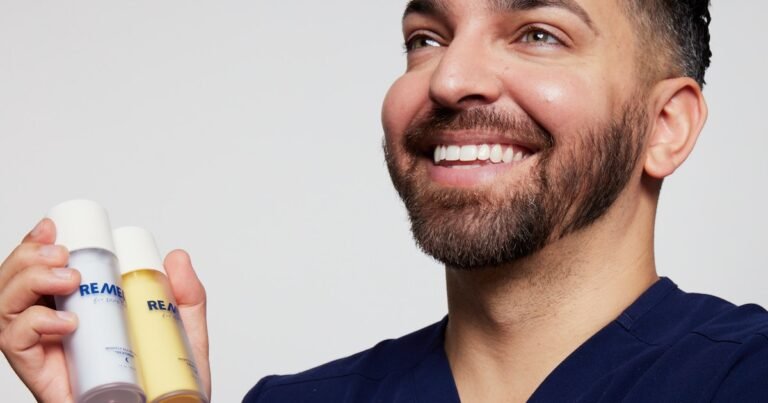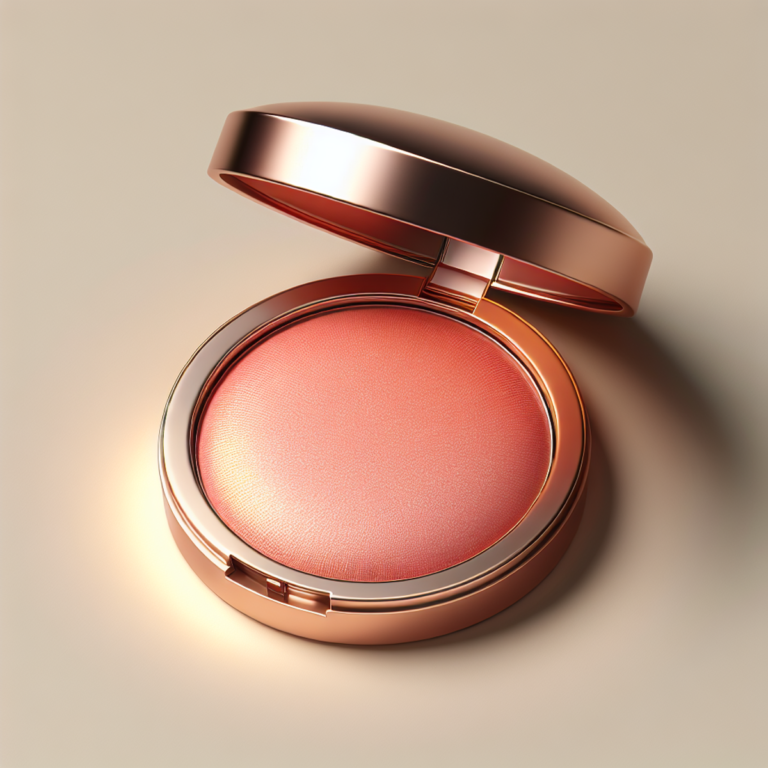3 Ways to Get Rid of a Hard Pimple

Introduction
Hard pimples, also known as nodules or cysts, are painful bumps that form deep under the skin. They happen when dead skin cells, oil, and bacteria clog pores. This type of acne not only affects your skin health but can also cause discomfort and make you self-conscious.
It’s important to deal with hard pimples quickly to prevent them from getting worse, causing scars, or leaving permanent marks. Ignoring these nodules might lead to more serious skin problems that need intense treatments.
In this article, you’ll learn 3 ways to get rid of a hard pimple, effectively targeting these stubborn spots:
- Using over-the-counter products with powerful ingredients specifically designed to treat hard pimples.
- Applying warm compresses to ease pain and speed up healing.
- Using ice packs for quick relief from swelling.
These methods are practical steps in understanding how to remove pimples overnight or quickly shrink a pimple in minutes. Whether you’re looking for the best way to get rid of pimples or seeking fast remedies for those pesky bumps, this guide offers detailed insights into effective solutions and preventive measures.
Understanding Hard Pimples
Hard pimples, often referred to as nodules or cysts, are a more severe form of acne that develop deep within the skin layers. These painful, long-lasting bumps are characterized by their hardness and can be particularly challenging to treat.
Formation of Hard Pimples
The formation of these hard pimples is rooted in a combination of factors:
- Dead Skin Cells: As skin cells die, they can accumulate and clog the pores.
- Excess Sebum Production: The skin produces sebum, an oily substance meant to protect and moisturize. However, an overproduction can lead to clogged pores.
- Bacteria Build-Up: The trapped bacteria within the clogged pores trigger inflammation, resulting in the formation of a hard pimple.
Differentiating Hard Pimples from Other Acne Lesions
Understanding the distinctions between hard pimples and other types of acne lesions is crucial for effective treatment:
- Whiteheads & Blackheads: These are less severe forms of acne that occur closer to the skin’s surface. Whiteheads are closed pores, while blackheads are open and exposed to air.
- Nodules & Cysts: Unlike whiteheads and blackheads, nodules and cysts form deeper within the skin layers. Nodules are solid and painful bumps, while cysts contain pus and can result in scarring.
Addressing issues like how to get rid of pimples on your face or how to remove pimple marks hinges on understanding these differences. While some may seek methods on how to remove pimples naturally and permanently or tackle specific issues like how to get rid of back pimples or tiny bumps on the forehead, recognizing the root causes helps in selecting appropriate treatments.
Whether you’re dealing with a stubborn blind pimple or exploring how to get rid of small bumps on your face, identifying these causes is pivotal for effective management and prevention strategies.
1. Over-the-Counter Products
When dealing with stubborn pimples, over-the-counter products are often the go-to solution. These treatments contain active ingredients specifically designed to target and reduce these persistent blemishes. Here’s how they work and what you should consider when selecting a product.
Active Ingredients That Make a Difference
Hard pimples can be tough to tackle because they’re deep and can cause inflammation. But certain ingredients in over-the-counter products can help:
- Benzoyl Peroxide: This ingredient kills the bacteria that cause acne and reduces inflammation, making it a popular choice for treating hard pimples.
- Salicylic Acid: It helps exfoliate the skin and unclog pores by breaking down dead skin cells. Salicylic acid is especially effective for getting rid of small bumps on the face.
- Retinoids: While stronger forms are usually available with a prescription, some over-the-counter options can still promote cell turnover and prevent clogged pores.
Top-Rated Over-The-Counter Products
Choosing the right product is crucial for successfully getting rid of pimples or addressing forehead bumps. Here are some highly recommended options:
- Neutrogena Rapid Clear Stubborn Acne Cleanser: With 10% benzoyl peroxide, this cleanser targets hard pimples effectively and can be used daily.
- CeraVe SA Smoothing Cleanser: Containing salicylic acid, this cleanser not only clears existing pimples but also prevents future breakouts by gently exfoliating the skin.
- La Roche-Posay Effaclar Duo Dual Action Acne Treatment: Combining benzoyl peroxide with an oil-free formula, this spot treatment is perfect for tackling persistent acne without drying out your skin too much.
Choosing the Right Product for Your Skin
Understanding your skin type and sensitivity level is key when navigating through acne solutions. Here’s how you can make the best choice:
- For Sensitive Skin: Opt for products with lower concentrations of benzoyl peroxide or salicylic acid to minimize irritation.
- For Oily Skin: Look for formulations that provide oil control along with acne treatment benefits.
- To Remove Dark Spots Caused by Pimples: Retinoid-infused products help fade post-inflammatory hyperpigmentation while preventing new breakouts.
Additional Considerations
In your journey to stop getting pimples or clear them up, consider incorporating these practices into your routine:
- Be consistent; follow a regular skincare routine and give products time to work.
- Avoid using multiple active ingredients at once unless advised by a dermatologist, as this may cause irritation.
Knowing what each product does will empower you to choose wisely and maintain healthy skin while addressing specific concerns like preventing future breakouts permanently. With patience and proper care, over-the-counter treatments such as cleansers can make a significant difference in managing hard pimples effectively.
2. Warm Compresses
Warm compresses are a gentle yet effective method in the arsenal of hard pimple treatment. These compresses serve as a natural remedy to reduce pain and encourage the drainage of stubborn pimples, providing relief from the discomfort associated with these deep skin lesions.
Benefits of Warm Compresses
- Pain Reduction: The heat from a warm compress can help relieve the pain that accompanies hard pimples. This is particularly beneficial for those dealing with cystic acne, where inflammation and tenderness are common.
- Promotes Drainage: By dilating blood vessels and increasing circulation, warm compresses can facilitate the natural drainage process. This helps in reducing the size and severity of the pimple, making it less prominent on your skin.
- Soothing Effect: Beyond just physical benefits, applying warmth to your skin has a calming effect, which can be soothing during an outbreak and contribute to stress reduction—a known factor in acne flare-ups.
Step-by-Step Guide to Applying a Warm Compress
- Gather Your Materials: You will need a clean washcloth and a bowl of hot water. Ensure the water is hot but not scalding to prevent burns.
- Soak the Washcloth: Submerge the washcloth in the hot water and let it soak for a few minutes until it becomes saturated.
- Wring Out Excess Water: Carefully remove the washcloth from the water and wring out any excess liquid to avoid dripping.
- Apply to Affected Area: Place the warm washcloth gently over your hard pimple. Hold it against your skin for 10-15 minutes, allowing the warmth to penetrate deeply into the skin layers.
- Repeat as Needed: For optimal results, repeat this process several times throughout the day to maintain consistent heat application.
Additional Tips
- Consistency is Key: Incorporate warm compresses into your daily skincare routine when dealing with hard pimples for maximum impact.
- Hygiene Matters: Always use a clean washcloth each time to prevent bacteria spread, which can exacerbate acne issues.
Incorporating warm compresses into your routine not only aids in treating existing hard pimples but also aligns with various queries like how to reduce pimples, how to stop pimples, and how to get rid of deep pimples. While they are not an instant solution like some might hope when searching for how to get rid of zits fast, they provide a gentle yet effective approach without irritating sensitive skin.
By understanding how warm compresses work and following these straightforward steps, you can effectively manage hard pimples while preventing potential complications such as scarring—addressing concerns tied to how to remove pimple scars naturally or pimple scar removal.
3. Ice Packs
Dealing with hard pimples can be both frustrating and painful. One effective method to combat the discomfort is the application of ice packs. These can offer immediate relief from the swelling and inflammation commonly associated with these stubborn skin issues.
Benefits of Using Ice Packs
- Reduces Swelling: Applying ice packs helps constrict blood vessels, which reduces swelling and minimizes redness.
- Alleviates Pain: The cold temperature numbs the affected area, providing relief from pain and tenderness.
- Minimizes Pores: Ice packs can tighten pores temporarily, which may help prevent further bacterial invasion.
This method is ideal if you’re looking for quick solutions on how to shrink a cystic pimple overnight or how to get rid of pimples on the forehead overnight.
Instructions for Safe Application
To ensure safe and effective use of ice packs, follow these steps:
- Wrap the Ice Pack: Always wrap the ice pack in a soft cloth or towel before applying it to your skin. Direct contact with ice can cause frostbite or damage sensitive facial skin.
- Apply to Affected Area: Gently place the wrapped ice pack onto the hard pimple for about 10 minutes. Avoid pressing too hard as this could worsen inflammation.
- Rest Between Applications: Remove the ice pack after 10 minutes and allow your skin to rest for at least another 10 minutes before reapplying.
- Repeat as Needed: You can repeat this process several times a day, as needed, to alleviate symptoms like swelling and pain.
When exploring how to get rid of bumps on face or how to treat tiny bumps on face, remember that consistency is key. Regular application can yield more noticeable results.
Precautions
- Avoid Overuse: Excessive use of ice packs can lead to skin irritation or even frostbite.
- Monitor Skin Reaction: Pay attention to any adverse reactions, such as increased redness or discomfort, which may indicate that your skin is sensitive to cold treatments.
Using ice packs is a simple yet powerful way in your quest for effective hard pimple treatment strategies. This approach complements other methods like warm compresses, offering a multifaceted solution on how to get rid of under-the-skin pimples swiftly and safely. For those also dealing with acne scars, combining these treatments with a quality pimple scar removal cream might enhance overall results.
Preventive Measures for Hard Pimples
Maintaining a consistent skincare routine is crucial for preventing breakouts, especially when dealing with hard pimples. Begin with gentle cleansing and exfoliation to remove excess oil and dead skin cells that can clog pores. Opt for a mild cleanser suitable for your skin type to avoid irritation. Exfoliating once or twice a week can help keep the skin smooth and clear, but over-exfoliation should be avoided as it may lead to skin damage.
Key Skincare Practices:
- Gentle Cleansing: Use a sulfate-free cleanser that aligns with your skin type. Products with natural ingredients can be beneficial.
- Regular Exfoliation: Incorporate an exfoliant containing alpha hydroxy acids (AHAs) or beta hydroxy acids (BHAs) to slough off dead skin cells.
- Moisturizing: Even oily or acne-prone skin requires hydration. Choose non-comedogenic moisturizers to prevent further clogging of pores.
Lifestyle changes play a significant role in skin health too. Staying hydrated helps maintain the skin’s elasticity and flushes out toxins, reducing the likelihood of breakouts. Drinking at least 8 glasses of water daily can support clearer skin.
Influential Lifestyle Adjustments:
- Hydration: Adequate water intake aids in detoxifying the body and maintaining healthy skin.
- Balanced Diet: A diet rich in fruits, vegetables, and lean proteins supports overall health, including that of your skin.
- Stress Management: Techniques like yoga or meditation can reduce stress levels, which are often linked to acne flare-ups.
Natural home remedies offer alternatives for those wondering how to get rid of pimples naturally at home. Ingredients like tea tree oil and honey are known for their antibacterial properties, providing solutions for how to cure pimples without harsh chemicals.
For those seeking answers on how to get rid of spots on the bum overnight or how to get rid of teenage pimples naturally at home, consider making small adjustments to personal care routines:
- Avoid Tight Clothing: Wearing loose-fitting clothes reduces friction and irritation that can exacerbate pimples on areas like the buttocks.
- Spot Treatments: Apply diluted tea tree oil directly onto spots before bedtime.
Implementing these preventive measures consistently helps in not just managing existing conditions but also averts future outbreaks effectively. By integrating these practices into daily life, you take proactive steps towards achieving clearer, healthier skin.
When to Seek Professional Help for Hard Pimples
Persistent hard pimples can be more than just a cosmetic concern. They may signal an underlying skin condition that requires professional attention. Here are some signs indicating a need for dermatologist consultation:
- Chronic or Recurring Pimples: If hard pimples frequently appear or linger despite home treatments, a dermatologist can provide a tailored approach to manage them effectively.
- Severe Pain or Discomfort: Hard pimples causing significant pain might benefit from medical intervention to alleviate symptoms and prevent further complications.
- Scarring or Skin Damage: Professional treatment can help minimize the risk of permanent scarring, which is common with untreated nodules and cysts.
- Infection Symptoms: Signs such as pus, redness, warmth, or fever around the affected area should prompt immediate medical evaluation.
Dermatologists offer various treatment options tailored to your specific needs. These may include:
- Prescription Medications: Topical or oral antibiotics, retinoids, and hormonal therapies can target severe acne effectively.
- Procedural Treatments: Techniques such as corticosteroid injections or laser therapy may reduce inflammation and expedite healing.
Seeking expert advice is crucial when self-treatment doesn’t yield results. Not only does it address current issues, but it also provides strategies on how to prevent future outbreaks, offering insights into questions like how to get rid of bumps on butt or how to stop pimples coming on face at home.
Conclusion
Successfully managing hard pimples involves integrating effective treatment methods with preventive strategies. By utilizing over-the-counter products, applying warm compresses, and using ice packs, you tackle the immediate challenges posed by these stubborn blemishes. Emphasizing a comprehensive approach ensures not only the treatment of existing conditions but also the prevention of future breakouts. Cultivating a consistent skincare routine is essential, as is seeking professional advice when needed. Adopting these practices empowers you to address various skin concerns, from how to get rid of vaginal pimples to treating pimples on the buttocks and beyond, fostering healthier skin.
FAQs (Frequently Asked Questions)
What are hard pimples and how do they form?
Hard pimples, also known as nodules or cysts, form deep within the skin layers due to clogged pores caused by dead skin cells, excess sebum production, and bacteria. This leads to inflammation and the characteristic hardness of these lesions.
What over-the-counter products are effective for treating hard pimples?
Certain over-the-counter products containing active ingredients like benzoyl peroxide or salicylic acid can effectively target hard pimples. It’s important to choose a product based on your skin type and sensitivity for optimal results.
How can warm compresses help with hard pimples?
Warm compresses can reduce pain and promote drainage in hard pimples. Applying a warm compress safely to the affected area helps alleviate discomfort and may encourage the pimple to surface.
What is the benefit of using ice packs on hard pimples?
Ice packs provide immediate relief from swelling and inflammation associated with hard pimples. They can help numb the area, reducing pain and redness when applied correctly to avoid skin damage.
What preventive measures can I take to avoid hard pimples?
Maintaining a consistent skincare routine that includes gentle cleansing and exfoliation is crucial for preventing future breakouts. Additionally, lifestyle changes such as staying hydrated and managing stress levels can positively impact skin health.
When should I seek professional help for hard pimples?
You should seek professional evaluation from a dermatologist if you experience persistent or severe breakouts, signs of infection, or if over-the-counter treatments fail to improve your condition. A dermatologist can provide tailored treatment options.










